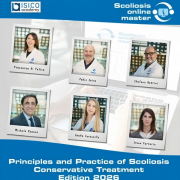The Use of Proximal Femur Maturity Index in Guiding Brace Weaning for Adolescent Idiopathic Scoliosis
Prudence Wing Hang Cheung, Federico Canavese, Janus Siu Him Wong, Keith Dip Kei Luk, Jason Pui Yin Cheung
JB JS Open Access. 2025 Nov 12;10(4):e25.00191. doi: 10.2106/JBJS.OA.25.00191.eCollection 2025 Oct-Dec
ABSTRACT
Background: For adolescent idiopathic scoliosis, whether the Proximal Femur Maturity Index (PFMI) can guide brace-wear weaning remains unknown. The aim of this study was to investigate whether PFMI gradings at brace weaning were related to curve progression after brace treatment and to evaluate the postweaning curve progression risk associated with PFMI gradings.
Methods: This prospective study included 137 patients who were advised to wean from underarm bracing with adequate compliance. They were followed up for at least 2 years. Data collection included bodily growth parameters, curve magnitude, and skeletal maturity status at weaning as assessed by PFMI, distal radius and ulna classification, and Risser and Sanders staging. Curve progression was defined as >6° major curve increase at postweaning 2 years. Relationships between PFMI and other skeletal maturity gradings, and whether parameters at weaning were associated with curve progression were investigated.
Results: There were 59.1% (n = 81) of patients who weaned bracing at PFMI grade 5, 39.4% at grade 6, and 1.5% at grade 4. PFMI gradings correlated with radius (G = 0.596, p < 0.001), ulnar (G= 0.700, p < 0.001), and Sanders (G = 0.689, p < 0.001) stages. 11.7% of the patients experienced curve progression. Curve progression rate was 0% for those who weaned at PFMI grade 6, or PFMI grade 5 with Risser stage 5 or ≥ R10 U9 for <30° curves. Compared with PFMI grade 4 or 5, weaning at grade 6 reduced progression risk by 29.7% (95% Confidence Interval [CI] 13.3-43.0, p = 0.023) for curves ≥30°, while relative risk reduction was 10.9% (95% CI 1.4-19.4, p = 0.037) for <30° curves.
Conclusions: For patients who were prescribed bracing for their 25° to 40° curves with adequate compliance, PFMI grade 6 can serve as an independent indicator for guiding brace weaning with minimal curve progression risk.
Copyright © 2025 The Authors. Published by The Journal of Bone and Joint Surgery, Incorporated. All rights reserved.

